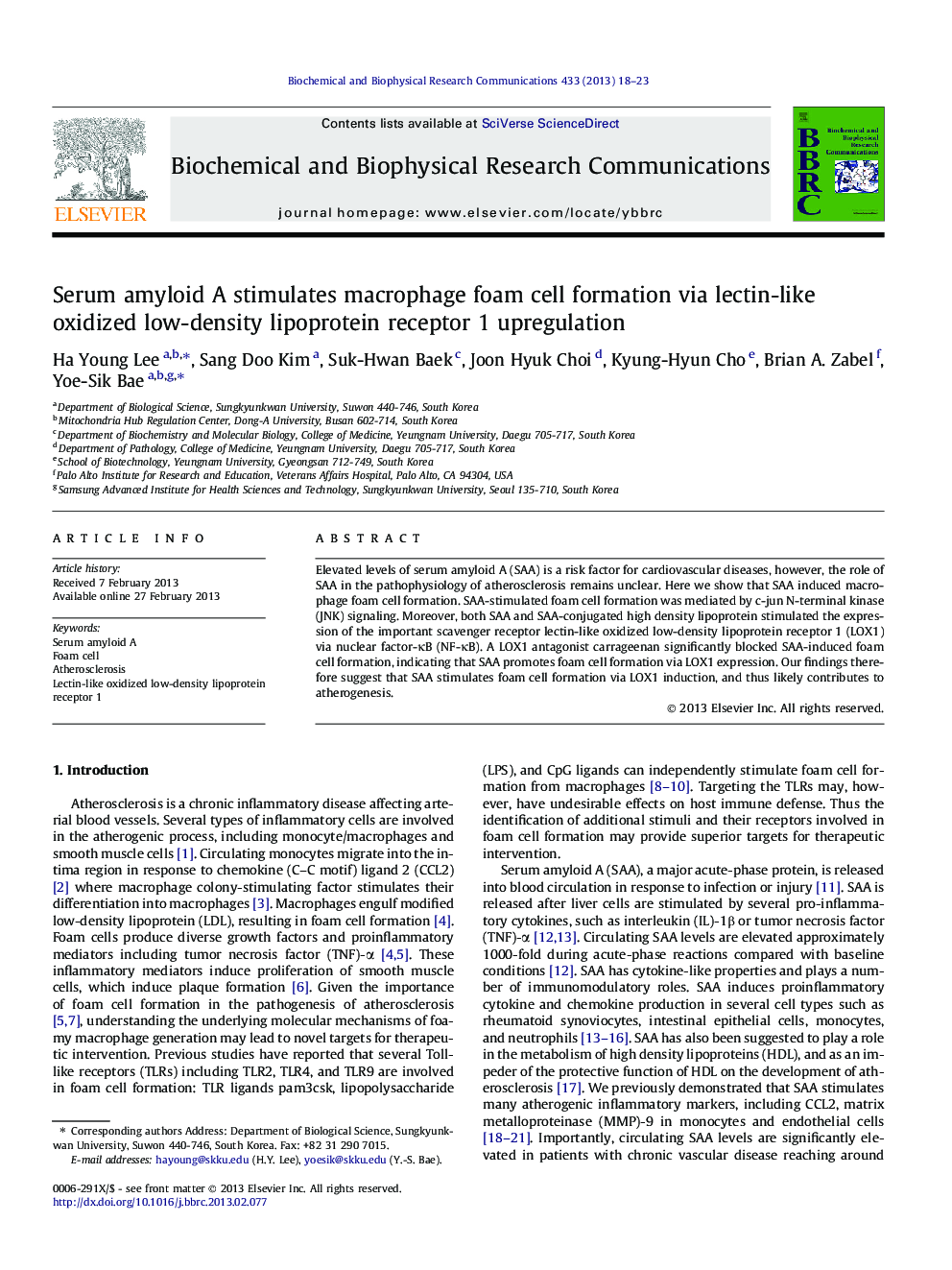| کد مقاله | کد نشریه | سال انتشار | مقاله انگلیسی | نسخه تمام متن |
|---|---|---|---|---|
| 1928754 | 1050424 | 2013 | 6 صفحه PDF | دانلود رایگان |

Elevated levels of serum amyloid A (SAA) is a risk factor for cardiovascular diseases, however, the role of SAA in the pathophysiology of atherosclerosis remains unclear. Here we show that SAA induced macrophage foam cell formation. SAA-stimulated foam cell formation was mediated by c-jun N-terminal kinase (JNK) signaling. Moreover, both SAA and SAA-conjugated high density lipoprotein stimulated the expression of the important scavenger receptor lectin-like oxidized low-density lipoprotein receptor 1 (LOX1) via nuclear factor-κB (NF-κB). A LOX1 antagonist carrageenan significantly blocked SAA-induced foam cell formation, indicating that SAA promotes foam cell formation via LOX1 expression. Our findings therefore suggest that SAA stimulates foam cell formation via LOX1 induction, and thus likely contributes to atherogenesis.
► SAA induced macrophage foam cell formation.
► SAA stimulated upregulation of lectin-like oxidized low-density lipoprotein receptor 1 (LOX1).
► SAA-induced LOX1 expression and foam cell formation is mediated by JNK/NF-κB signaling.
► HDL-conjugated SAA also stimulates foam cell formation via LOX1 upregulation.
► The finding reveals a novel mechanism of action of SAA in the pathogenesis of atherosclerosis.
Journal: Biochemical and Biophysical Research Communications - Volume 433, Issue 1, 29 March 2013, Pages 18–23